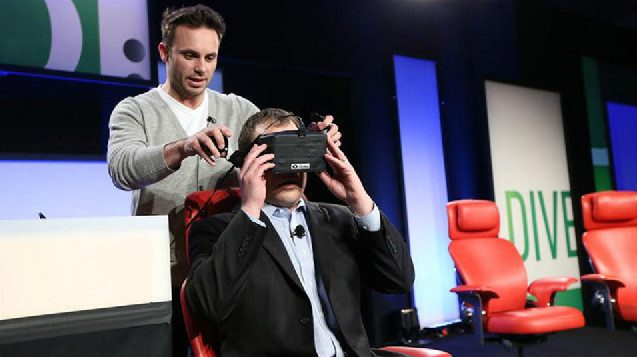At the ‘D: Dive Into Media’ conference on Tuesday, Brendan Iribe joined Peter Kafta from AllthingsD to give him a chance to try the Oculus Rift HMD. His reaction to the experience, mirrored those of many before him — yet another startled VR first-timer hit with a possible glimpse of the future of gaming.
Of course, he also experienced something else that’s accompanied the Rift’s universal acclaim — nausea brought on by motion sickness, despite only being immersed for a few minutes. His reaction simultaneously highlights the paradigm shift the fledgling VR headset is initiating and the need for a solution to it’s current lack of positional tracking. Positional tracking tackles the current disconnect between the player and their brain when they move in physical space but the image does not.
Whilst we’re fairly sure that the boffins at Oculus are frantically at work trying to come up with a solution to this tricky issue, our very own DIY VR boffin thinks he has a workable solution, detailed in his excellent article here.
Source article is over at AllthingsD here, and you can read more about the challenges of VR and the basics of head tracking here.







